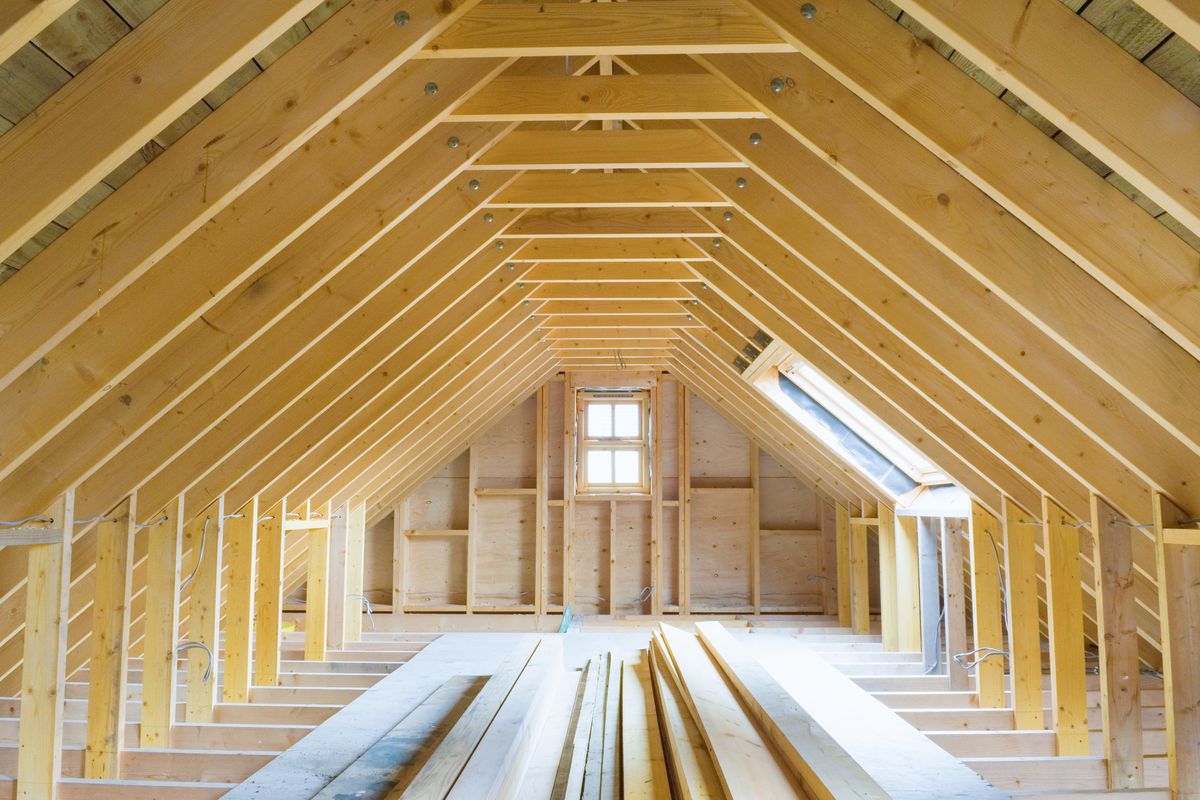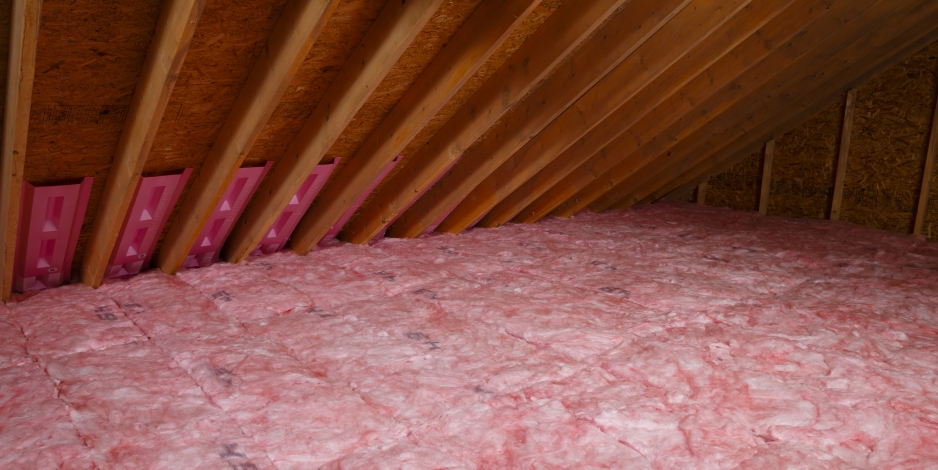The Ultimate Overview to Choosing the Right Attic Insulation DFW Solutions
The Ultimate Overview to Choosing the Right Attic Insulation DFW Solutions
Blog Article
Discover the Different Sorts Of Attic Insulation and Their Special Advantages for Your Home's Power Performance

Fiberglass Insulation
Fiberglass insulation is just one of one of the most generally used materials for attic insulation as a result of its superb thermal performance and cost-effectiveness. Made up of little glass fibers, this material efficiently traps air, developing a protecting obstacle that helps keep regular indoor temperatures. Its high R-value per inch makes it specifically effective at resisting warm transfer, which is essential for energy conservation in homes.
Installation of fiberglass insulation is relatively straightforward, usually readily available in batts or loose-fill kinds, fitting numerous attic configurations. Furthermore, it is immune and non-combustible to wetness, minimizing the risk of mold and mildew development. This toughness adds to its durability, making fiberglass a sensible lasting investment for property owners.
Furthermore, fiberglass insulation is usually produced from recycled materials, which boosts its eco-friendliness. The material can additionally contribute to soundproofing, minimizing noise transfer between areas. While it is necessary to put on protective equipment during setup to avoid inflammation from the fibers, the total advantages of fiberglass insulation, including energy financial savings and ecological considerations, make it a popular choice for improving attic room efficiency and advertising a comfortable living setting.
Spray Foam Insulation
Spray foam insulation is a very reliable alternative for attic insulation, known for its remarkable air sealing and thermal performance. This innovative insulation product is made up of a mixture of isocyanate and polyol resin, which, when incorporated, expands rapidly to load spaces and tooth cavities in the attic space. Its ability to follow different surfaces guarantees a continuous barrier versus air leakages, substantially minimizing warmth loss throughout cooler months and warm gain throughout warmer seasons.
One of the essential advantages of spray foam insulation is its high R-value per inch, which suggests it offers superb thermal resistance in a reasonably thin application. This is specifically beneficial in attic rooms where room is typically limited. Furthermore, spray foam can aid lessen wetness accumulation, reducing the threat of mold and mildew and mildew development, which can be detrimental to both the structure and indoor air top quality.
While the preliminary expense of spray foam insulation might be higher than conventional choices, its lasting power savings, combined with raised comfort and enhanced home value, make it a beneficial financial investment for property owners looking for enhanced power efficiency. Attic Insulation DFW. On the whole, spray foam insulation stands out as a reliable solution for optimizing attic room insulation
Cellulose Insulation

Cellulose insulation is a preferred selection for attic room insulation, largely made up of recycled paper products treated with fire retardants. This ecologically pleasant choice is understood for its outstanding thermal efficiency, properly minimizing heat transfer in both summertime and cold weather. The dense composition of cellulose allows it to fill up voids and gaps in attic room spaces, giving a smooth obstacle against air leakages.
One of the significant advantages of cellulose insulation is its capability to resist mold and parasites, owing to the fire retardant treatments utilized during manufacturing. Additionally, it boasts a high R-value per inch, which equates right into remarkable power effectiveness. Property owners can anticipate reduced heating & cooling costs as a result of boosted insulation.
Installment is generally achieved through blowing click here to find out more loose cellulose into the preferred location, enabling a effective and quick process. This approach also minimizes disturbance to the existing framework. Moreover, cellulose insulation has a relatively reduced environmental effect, as its manufacturing procedure utilizes recycled materials, adding to lasting structure practices.
Rock Woollen Insulation
Among the different options for attic room insulation, rock woollen, likewise called mineral woollen, attracts attention as a result of its outstanding thermal and acoustic efficiency. Made from natural or recycled products, rock wool is created by melting rock and spinning it into fibers, causing an item that offers outstanding insulation properties.
One of the considerable advantages of rock woollen insulation is its high R-value, which indicates its performance in withstanding warmth circulation. This characteristic not just boosts power efficiency but additionally adds to preserving a comfy interior temperature year-round. Additionally, rock woollen is inherently fireproof, making it a more secure option for homes as it can withstand high temperatures without melting or launching harmful fumes.
In addition, rock wool insulation masters soundproofing abilities, efficiently decreasing noise transmission in between areas and from outside resources. This makes it an optimal choice for property owners seeking a peaceful living setting. Additionally, rock wool is moisture-resistant, assisting to avoid mold and mildew development and keeping the architectural honesty of the attic room room. Generally, rock wool insulation offers an extensive service for enhancing energy effectiveness, security, and convenience in residential setups.
Glowing Barrier Insulation
Glowing barrier insulation offers as an efficient remedy for decreasing warmth transfer in attic rooms, particularly in warmer environments. This kind of insulation jobs by showing induction heat far from living areas, thus reducing the amount of warmth that goes into a home during warm weather condition - Attic Insulation DFW. Typically made up of an extremely reflective product, such as aluminum foil, radiant barriers are mounted in attic rooms, encountering the roofing system, where they can intercept incoming warmth from the sunlight
The key advantage of radiant barrier insulation is its ability to reduced cooling expenses. By showing warm instead of absorbing it, radiant obstacles can assist preserve an extra steady interior view publisher site temperature level, lowering the workload on air conditioning systems. This performance converts right into reduced power costs and raised comfort for house owners.
Along with power cost savings, glowing barriers can additionally add to enhanced interior air quality. By reducing warm buildup, they help reduce humidity levels, which can stop mold and mildew development and enhance overall air blood circulation. When mounted correctly, glowing obstacle insulation can be an invaluable enhancement to any kind of energy-efficient home, making it a deserving factor to consider for home owners looking to boost their attic room insulation method.
Conclusion
In conclusion, recognizing the different types of attic insulation-- fiberglass, spray foam, cellulose, rock woollen, and radiant barriers-- makes it possible for home owners to make informed decisions concerning energy efficiency. By choosing the appropriate insulation material, substantial find out this here reductions in power costs can be achieved, along with enhancements in indoor convenience.

In verdict, recognizing the different types of attic insulation-- fiberglass, spray foam, cellulose, rock woollen, and radiant barriers-- enables homeowners to make enlightened decisions concerning energy performance.
Report this page